Hope for the Best: Prepare for the Worst
SARATOGA SPRINGS — Workplace violence and school shootings. Catastrophic weather events and rail accidents exposing residential neighborhoods to hazardous materials.
“Those to me are the hazards we face on any given day,” explained John Catone. The assistant city police chief recently completed a near-two-year project of compiling potential disaster concerns in Saratoga Springs and how to best address them. The Comprehensive Emergency Management Plan – comprised of approximately 500 pages of documents and annexes – was unanimously approved by the council this month. It is the first new comprehensive plan the city has had in nearly a decade.
Risk preparedness, response, and recovery are three aspects of the plan. In terms of concerns, the potential of a catastrophic weather event, and terrorism register on the city agenda. “You’re also taking into account school shootings and workplace violence, because that’s really what’s going on today,” Catone said. The potential for public exposure to hazardous materials weighs heavily, as well.
“What is of interest around here is the rail. In terms of a potential incident, that is a reality for us because we have a lot of things shipped along the rail line that runs along a large section of the city,” Catone said. The Department of Environmental Conservation and the state Thruway Authority are preparing a draft Environmental Impact Statement regarding a pipeline project which would span nearly 170 miles from Albany to New Jersey and carry Bakken crude oil through Saratoga Springs and in close proximity to local homes, Saratoga Hospital, Skidmore College and Saratoga Springs High School.
“Originally there was some discussion about whether we could use what we had (written prior to 2008) and make some adjustments. I started reading through it and saw there was no way. Times have changed. So many adjustments have been made to emergency management that the only way was to do a total re-write of the plan; take the old one and do an entirely new one based on all the things that have occurred since Hurricane Katrina,” Catone said.
The combination of a short-staffed department – decimated from 68 to 69 members down to 54 because of layoffs and retirements – and an ever-changing City Council which didn’t place a high priority on emergency management, contributed to the time-lag, Catone said. The City Charter stipulates the plan should be reviewed every three years. Catone is pushing to change that to an annual review, as well as getting all of the city departments involved.
“I made it clear to the council that they’ve got to change the City Charter, because things change so much in emergency management. This should be a fluid document. If you wait three years and it becomes a fourth and a fifth year, then whoever comes after me is going to have to do a complete re-write,” Catone said.
“The way it’s written, it also all falls under the Commissioner of Public Safety, but that’s not the way it’s supposed to be. The Commissioner of Public Safety does not make financial policy – that’s Finance; does not make purchasing policy – that’s Accounts; does not deal with other things that belongs to the mayor’s office, or manage the resources and personnel of DPW. So, I came back to everybody and said: this is the draft and you all have to be involved.”
On any given day, the city population of 29,000 can swell exponentially given visitors to large venues such as the racecourse, SPAC, and special events staged throughout the year, as well as the flow of area residents from rapidly expanding adjoining communities.
“We are very unique. Without all the planning and training we do, there’s no way that we could accommodate all those events (and guard against) major incidents. If the first day you’re going to prepare for this is the day that the event happens - forget it. The event will have already run you over,” said Catone who is chairman of the Emergency Management Team and is currently coordinating a Disaster and Recovery Team to include members of all departments.
Police training has amped up in recent years to include active shooter drills, large-scale school evacuations, and in preparation of potential scenarios at places like Saratoga Hospital and Skidmore College.
“I can tell you from experience: never say never,” said city DPW Commissioner Anthony “Skip” Scirocco. “When I was county supervisor, I can’t tell you the chaos that happened after the tornado in Mechanicville because of the radio system; nobody could talk to anyone down there and I don’t think there was a comprehensive plan in place like this one. Through situations like that, we learn and we make changes.”
Recent changes include integration with the county radio system to allow for better communication in the case of a major emergency, developing a business continuity plan to specify how each department expects to function in the case of a major disaster, and designating a shelter or other place where people can bring their pets – the latter being a lesson learned after people lost their lives during Hurricane Katrina because they refused to evacuate their homes and leave their pets behind.
“You also need to have an emergency operation center,” Catone said. “It can’t be on the hood of a car. When we had the major ice storm in 2006, the council met in the stairwell down by the vending machine because there was nothing else. You can’t operate that way.”
In February 2006, a winter storm plunged the city into an icy darkness that lasted in some wards for several days. Since that time, an emergency generator has been installed at City Hall, and Catone has specified the Saratoga Music Hall, on the upper floor of City Hall, would serve as an operations center.
“The major players all work in this building. We’ll be able to do things with the generator running and if we gather in the Music Hall it will give us, for now, a place to break out into work groups and bring everybody together for meetings,” he said. At least one alternate site still needs to be designated, as the city has plans to convert the hall into a courtroom.
“The public has an expectation given all the events of the past 10 or 15 years that you know how to do this, and that you’re prepared,” Catone said. “So, you better know how to do this.”
Shelter From The Storm Code Blue Secures New Home
Shelter From The Storm: Code Blue Secures New Winter Home
SARATOGA SPRINGS – Mike Finocchi cast his eyes across the big room which stands on the corner where Henry and Caroline streets meet.
The executive director at Shelters of Saratoga took stock of the kitchen, where wood cabinets bookend a stove and microwave, a refrigerator and a freezer. He noted the spacious women’s and men’s restrooms, strolled through the large adjacent room where supplies and clothing will be stored, and imagined the dozens of cots that will be placed in the main room and made available to the city’s homeless population as a place to shelter during the harshest days of the impending winter.
After setting up shop at the Salvation Army building during the past two years, Code Blue Saratoga – which is under the guidance of S.O.S. – was in need of a new temporary center to house its emergency shelter. A lease agreement with Soul Saving Station, in effect from Nov. 1, 2016 to April 1, 2017, was announced this week. S.O.S. will pay the organization monthly rent. Finocchi declined to specify the amount, but called the cost “fair.”
“Thank God they stepped up,” said Finocchi. “It got to the point in the summer when you’re thinking: gosh, what are we going to do? We were running out of options.”
The need for a city emergency shelter during the winter months is great. In its first abbreviated winter season in 2013-2014, the emergency shelter was open 58 nights and housed 928 overnight stays. In each of the past two years, the shelter was open more than 80 nights providing more than 3,054 and 3,344 overnight stays, respectively, in addition to more than 1,700 others who were provided dinner during the winter seasons of 2014-15 and 2015-16.
Between 2007 and 2015, although homelessness nationwide decreased by 11 percent, it increased in New York, rising by 41 percent, according to the 2015 Annual Homeless Assessment Report to Congress by the U.S. Department of Housing and Urban Development. Between 2014 and 2015 alone, New York State’s homeless population jumped by 7,660 - the largest increase in the nation for the one-year period.
“You never know what leads one to being homeless,” Finocchi said. “It could be a bitter divorce, or someone who may have lost everything. You just never know.”
The Code Blue Saratoga program was born from the tragic death of Nancy Pitts. The 54-year-old mother of two sought shelter on a Williams Street porch during a frigid December night in 2013. She was discovered by police the next morning. Within days of the homeless woman’s death, a cooperative partnership between then mayor-elect Joanne Yepsen, non-profit organizations, and members of the community was initiated and a plan set in motion to site an emergency shelter in the city.
"After Nancy Pitts, I was determined no one would die on the streets of Saratoga Springs ever again," Yepsen said Thursday. No city funds have been used in connection with the shelter.
The shelter initially opened when temperature dipped below 20 degrees Fahrenheit. Earlier this year, Gov. Andrew Cuomo signed an executive order which directed emergency shelters to operate when temperatures dropped below 32 degrees. The new threshold – likely to mark an increase in the number of days the shelter would operate - complicated the process for the largely volunteer staff in Saratoga. Code Blue’s previous hosts - the Salvation Army Worship and Community Center on Woodlawn Avenue – could no longer house the shelter on site because the increased days would interfere with their own programming.
“It’s easier for places in Albany, Schenectady and Troy who have mission type places to run that kind of program, but we don’t have that here,” said Finocchi, who added he was thankful Soul Saving Station stepped forward to make their Fellowship Hall available.
“As soon as they reached out to us, we said, ‘we have available space,’” said Arnold Byrd II, church pastor at Soul Saving Station. “It made sense to us. It’s something we should be doing. You have to be supportive of those who need help.”
Whereas the Salvation Army housed up to 100 cots, the new venue is slightly smaller. “It’s going to be a little tighter here, but the bottom line is no one needs to be sleeping on the street,” Finocchi said. “If it’s a little more snug than the Salvation Army, so be it, but at least people have an option other than the parking garage, or the woods and a tent.”
Given the geographic proximity to the plethora of bars and taverns along Caroline Street, Finocchi said the organization will be diligent in monitoring the shelter and will institute a midnight curfew, after which people may come in, but not go out.
Code Blue Saratoga will host a meeting and offer training for volunteers in October. Those interested in volunteering their time can sign up at: https://www.codebluesaratoga.org/wordpress/volunteer/how-to-volunteer/
For those interested in donating items, Code Blue Saratoga Director Cheryl Ann Murphy-Parant said the emergency shelter’s largest needs are men’s socks and underwear, canned food, and individually-wrapped snacks.
Shelter From The Storm: Code Blue Secures New Winter Home
SARATOGA SPRINGS – Mike Finocchi cast his eyes across the big room which stands on the corner where Henry and Caroline streets meet.
The executive director at Shelters of Saratoga took stock of the kitchen, where wood cabinets bookend a stove and microwave, a refrigerator and a freezer. He noted the spacious women’s and men’s restrooms, strolled through the large adjacent room where supplies and clothing will be stored, and imagined the dozens of cots that will be placed in the main room and made available to the city’s homeless population as a place to shelter during the harshest days of the impending winter.
After setting up shop at the Salvation Army building during the past two years, Code Blue Saratoga – which is under the guidance of S.O.S. – was in need of a new temporary center to house its emergency shelter. A lease agreement with Soul Saving Station, in effect from Nov. 1, 2016 to April 1, 2017, was announced this week. S.O.S. will pay the organization monthly rent. Finocchi declined to specify the amount, but called the cost “fair.”
“Thank God they stepped up,” said Finocchi. “It got to the point in the summer when you’re thinking: gosh, what are we going to do? We were running out of options.”
The need for a city emergency shelter during the winter months is great. In its first abbreviated winter season in 2013-2014, the emergency shelter was open 58 nights and housed 928 overnight stays. In each of the past two years, the shelter was open more than 80 nights providing more than 3,054 and 3,344 overnight stays, respectively, in addition to more than 1,700 others who were provided dinner during the winter seasons of 2014-15 and 2015-16.
Between 2007 and 2015, although homelessness nationwide decreased by 11 percent, it increased in New York, rising by 41 percent, according to the 2015 Annual Homeless Assessment Report to Congress by the U.S. Department of Housing and Urban Development. Between 2014 and 2015 alone, New York State’s homeless population jumped by 7,660 - the largest increase in the nation for the one-year period.
“You never know what leads one to being homeless,” Finocchi said. “It could be a bitter divorce, or someone who may have lost everything. You just never know.”
The Code Blue Saratoga program was born from the tragic death of Nancy Pitts. The 54-year-old mother of two sought shelter on a Williams Street porch during a frigid December night in 2013. She was discovered by police the next morning. Within days of the homeless woman’s death, a cooperative partnership between then mayor-elect Joanne Yepsen, non-profit organizations, and members of the community was initiated and a plan set in motion to site an emergency shelter in the city.
The shelter initially opened when temperature dipped below 20 degrees Fahrenheit. Earlier this year, Gov. Andrew Cuomo signed an executive order which directed emergency shelters to operate when temperatures dropped below 32 degrees. The new threshold – likely to mark an increase in the number of days the shelter would operate - complicated the process for the largely volunteer staff in Saratoga. Code Blue’s previous hosts - the Salvation Army Worship and Community Center on Woodlawn Avenue – could no longer house the shelter on site because the increased days would interfere with their own programming.
“It’s easier for places in Albany, Schenectady and Troy who have mission type places to run that kind of program, but we don’t have that here,” said Finocchi, who added he was thankful Soul Saving Station stepped forward to make their Fellowship Hall available.
“As soon as they reached out to us, we said, ‘we have available space,’” said Arnold Byrd II, church pastor at Soul Saving Station. “It made sense to us. It’s something we should be doing. You have to be supportive of those who need help.”
Whereas the Salvation Army housed up to 100 cots, the new venue is slightly smaller. “It’s going to be a little tighter here, but the bottom line is no one needs to be sleeping on the street,” Finocchi said. “If it’s a little more snug than the Salvation Army, so be it, but at least people have an option other than the parking garage, or the woods and a tent.”
Given the geographic proximity to the plethora of bars and taverns along Caroline Street, Finocchi said the organization will be diligent in monitoring the shelter and will institute a midnight curfew, after which people may come in, but not go out.
Code Blue Saratoga will host a meeting and offer training for volunteers in October. Those interested in volunteering their time can sign up at: https://www.codebluesaratoga.org/wordpress/volunteer/how-to-volunteer/
For those interested in donating items, Code Blue Saratoga Director Cheryl Ann Murphy-Parant said the emergency shelter’s largest needs are men’s socks and underwear, canned food, and individually-wrapped snacks.
‘Breathing Lights’ Illuminate Saratoga Night
SARATOGA SPRINGS – Adam Frelin studied the glow of a firefly. He watched it take in oxygen and the pattern of internment flashes it produced. Then he started thinking about what he saw and how to adapt it to the human world.
“It’s one of those things we’re compelled to look at. You look at a lightning bug and think: where else can that be applied?” explained Frelin, an artist, associate professor of art at the University at Albany, and a decade-long resident of Troy.
Two years ago, Frelin and local architect Barbara Nelson, began collaborating on a plan to create an unprecedented, multi-city public art installation. They called it “Breathing Lights.” The proposal won the Bloomberg Philanthropies Public Art Challenge, and was awarded a $1 million prize.
“We looked at the region we live in, and tried to recognize both the assets and the detriments we could work with,” Frelin said. “The assets had to do with the history of lighting technology – what took place at GE over the years and what’s now taking place at Rensselaer Polytechnic Institute. The detriment would have to be vacancies.
“We have 2,500 vacant buildings in the Capital Region and most of those buildings exist in neighborhoods that have been historically disinvested in one way or another,” he said. “The idea is to create a light effect that would be in these buildings. In this case, that effect creates the appearance of the light breathing.”
In October and November, Breathing Lights will result in the illumination of windows in hundreds of vacant homes in Albany, Schenectady and Troy.
Friday night, Saratoga Springs was granted a sneak peek of the installation that will be attracting national attention to the Capital Region. The area’s first glimpse was staged at Spring Street Gallery, where the building’s window glowed in a gentle rhythm to simulate human breath. Outside the gallery, where ArtsFestFridays staged a celebration in conjunction with the event, the tree branches bowing over Spring Street sprouted leaves bathed in lavender hues. Glow-in-the-dark street performers danced on the pavement accompanied by a throbbing beat produced by a DJ with an affection for the disco era.
Concentrated in neighborhoods with high levels of vacancy, Breathing Lights will transform abandoned structures from pockets of shadows into places of warmth.
“We’re lighting hundreds of them throughout the Capital Region,” Frelin said. His art – which depicts the intersection of the natural and the constructed world - are on exhibit inside the gallery: a gigantic four-way mirror is dropped into a busy vehicular intersection in Las Vegas resulting in auto-vertigo; massive harmonicas are planted atop natural green mountains that seem to inspire a cacophony of sharps and flats blown by the random wind. There are images of hot embers spraying a scarred ridge, and city fountains cast in bronze modeled after the individual faces of its citizenry.
A public art dialogue featuring Frelin will be staged 6:30 p.m. Friday at Spring Street Gallery, on 110 Spring St. The exhibition will be on display weekdays from 10 a.m. to 5 p.m. through Oct. 29.
“Breathing Lights takes place in neighborhoods that don’t usually have these type of projects happening, or this kind of attention,” Fredlin said. The ‘breathing lights” in a vacant building can reference different things - a life that once lived there, a life that might return should the building was to be re-occupied, the artist noted. “We hope, beyond creating something beautiful, to be able to draw some attention to an issue that a lot of work needs to be done.”
At the end of the installation, the windows – one by one – will fall dark, their shared sense of loss stirring a call to action.
Heart, Joan Jett, Cheap Trick Deliver Music For The I Love Rock & Roll Generation at SPAC
SARATOGA SPRINGS – THERE COMES A MOMENT when the band is on stage and when that moment comes everyone knows it.
The Moment generally occurs late in the musical set - strategically placed to accelerate momentum toward a grand finale - and when it happens, it transcends space and time. The moment is introduced with a series of notes plucked on guitar, or the beat of a drum, or a voice that taps a foggy, yet familiar memory. It happens with a song you heard more than million times during this summer or that, but have not heard in a long time since. And when you hear it once again all the feelings of the original moment come rushing back to remind of a time when the world was new and anything possible.
Those moments came often last week at Saratoga Performing Arts Center on a night that featured a trio of bands, each capable of producing shared memories.
For Cheap Trick, it came during “Dream Police,” posted at the tail-end of a 60-minute set and featuring longtime Tricksters Zander, Nielsen and Petersson on a checkerboard stage. Nearly half the songs of the band’s set appeared on the “Live at Budokan” sessions a generation ago. The set included fan favorites “Surrender,” and “I Want You to Want Me,” as well as a weird mash-up of the Velvet Underground’s “I’m Waiting For The Man” and “Heroin,” with guitarist Rick Nielsen channeling his inner Robert Quine, shredding and slashing his six-string noisemaker in a discordant symphony.
For Joan Jett and the Blackhearts, the moment came during her rendition of the early-80’s hit “I Love Rock ‘n’ Roll.” Jett’s Blackhearts hit the ground running, providing a solid sonic foundation to support her performance of “Bad Reputation,” “Fake Friends,” and “Love is Pain.” There were sturdy covers of Tommy James’ “Crimson and Clover,” Sly Stone’s “Everyday People,” Gary Glitter’s “Do You Wanna Touch Me,” and Bruce Springsteen’s “Light of Day” – the latter accompanied by a video reel showcasing Jett’s duo with actor Michael J. Fox in the 1987 film of the same name, on a backdrop.
Jett revisited her days with The Runaways in a staged reproduction of “You Drive Me Wild,” and “Cherry Bomb” – the latter being a timeless ode to troublemaking teen-hood that somehow did not seem out-of-place in the hands of the 57-year-old performer.
Heart, headliners of the night, reached back to the 1970s to perform “Magic Man,” “Barracuda,” “Kick it Out,” and “Straight On,” and came full circle on a 40-year timeline when they delivered “Beautiful Broken,” from their just-released album of the same name. Truth-be-told, Heart sounds better today than they ever did.
Guitarist Nancy Wilson’s extended two-minute acoustic guitar introduction that morphed into “Crazy On You” brought the crowd to its collective feet, and sister Ann Wilson’s amazingly still-vibrant-after-all-these-years vocals kept the crowd standing, showcasing her talents most notably on the power ballad “What About Love?” and the double-barreled dose of the band’s Led Zeppelin-inspired encore, featuring “The Immigrant Song,” and “Stairway To Heaven,” and including Wilson’s invocation of Robert Plant’s now-legendary ad-lib: “Does anyone remember laughter?”
You couldn’t have imagined a triple-bill featuring Heart, Joan Jett, and Cheap Trick taking place in the 1970s, but touring 2016 style makes for strange stage-fellows. On a late summer day marked by a passive-aggressive weather front that was both slogged by rain and filled with sunshine, no one in the crowd was complaining, with nearly four hours of music supplying endless options for each to find their own special moment.
Bread Basket Bakery Manager Opening A New Café
Lose 200 Jobs or Gain 1k?
blink-182 at SPAC: Party Like Its 2002
SARATOGA SPRINGS – Introduced to the stage by an eruption of pyrotechnics and the pulsating throb of a tom-tom drum, blink-182 showcased a 24-song set at the Saratoga Performing Arts Center Sunday night, delighting the crowd of more than 12,000 in attendance, many of whom stood for the duration of the band’s 80-minute show.
The boys of blink drew top billing among a quartet of power pop bands paying tribute to a sound-and-vision aura initiated by Cartoon Punk grand-daddies Green Day, from which each of the bands were spawned. Fittingly, perhaps, the concert marked a return to SPAC by blink-182, who first appeared at the venue sharing the stage with Green Day in 2002.
The band opened their set with “Feeling This,” siphoned off a half-dozen songs from their new album, ‘California,’ and concluded the show with a four-song encore – the inclusion of “Carousel,” released in 1995, and “Brohemian Rhapsody,” released this year - effectively tracing a 21-year timeline across the band’s songbook.
“Go back to 2002, put your bangs back down and tell your mom: it’s not a phase, mom, this is me!” founding band member Mark Hoppus announced to the crowd.
Following a series of solo projects and internal band conflict, the trio these days consists of longtime drummer Travis Barker, Matt Skiba – who took over co-vocal and guitar duties after Tom DeLonge left the band last year - and Hoppus, who attacked his bass as if he were strumming guitar while pogo dancing across the stage, a flop of Ed Grimley hair (Google it) dancing atop his head.
A good number of songs performed were culled from the band’s songbook dating back 15 years, the popular radio-friendly hits "The Rock Show," "All the Small Things," and "What's My Age Again?" among them. The members of the band are all in their forties, but gauging the presence of the large number of young people in attendance – say, under the age of 22 or so - many seemed to mark a new generation of blink-182 fans.
Inside the amphitheater, the vocals were flat at times, but the staging colorful and poignant, with an ever-changing screen of images alternately depicting rock ‘n’ roll posters, exploding bombs, eerie skulls and pleasant Frida Kahlo-like flowers.
blink-182 is currently headlining a cross-country tour with All American Rejects, All Time Low, and A Day To Remember, which began in San Diego in July and concludes in Los Angeles in October.





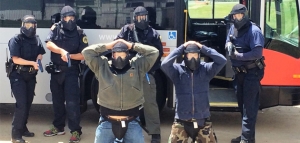

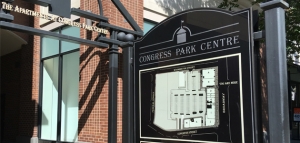


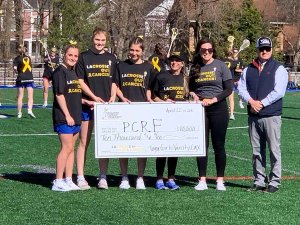




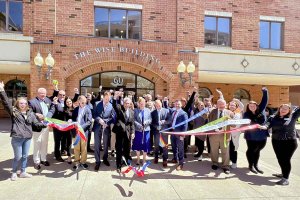


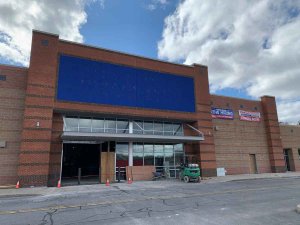
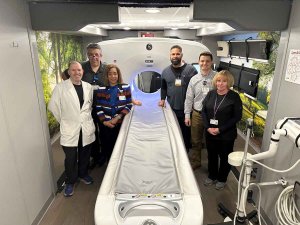










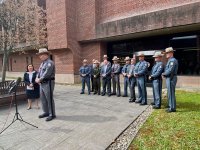


 How to resolve AdBlock issue?
How to resolve AdBlock issue? 









